A CFD Classroom Case Study
Obtaining efficient ventilation with overhead mixing systems for applications in heating climates can be a challenge. Not only does the positive buoyancy of the supply air work against the air distribution system, but most overhead mixing systems are designed with low supply air volumes (relative to cooling) and high supply air temperatures (more than 15°F above room temperature). This combination leads to unfavorable thermal stratification and a low zone air distribution effectiveness in the winter months. Air distribution effectiveness, as defined in ASHRAE Standard 62.1, measures how effectively a system delivers ventilation air into the breathing zone.
Although there are many strategies for addressing these issues, using high-induction ceiling diffusers, such as square swirl diffusers, is a cost-effective option since they work with existing designs and installation practices.
A high-induction diffuser discharges a swirling air pattern parallel to the ceiling, which reduces the throw of a diffuser (compared to a traditional mixing diffuser at the same airflow) and induces more room air up to the ceiling, thereby increasing mixing in the occupied zone. This reduces the thermal stratification in the space and produces a higher zone air distribution effectiveness compared to that of more traditional mixing diffusers.
Price’s Predict team recently vetted the application of these diffusers for a new primary school project in Quebec. The team created a computational fluid dynamics (CFD) model of a typical 567 square foot classroom in the school to analyze the effectiveness of the air distribution system in heating mode.
The initial design (shown in figure 1) consisted of two swirl diffusers in addition to standard slot diffusers next to the windows.
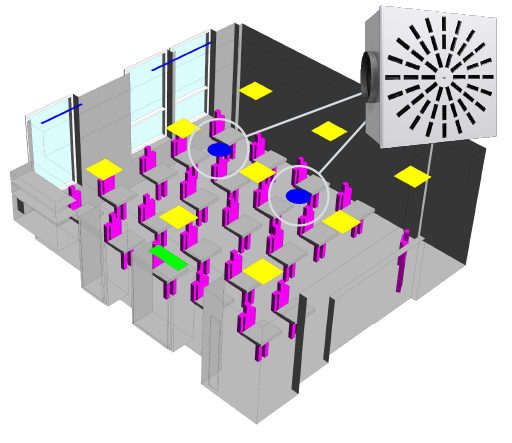 |
| Figure 1. The Predict team’s classroom CFD model, including two high-induction diffusers (Price’s Radial Slot Diffuser pictured) |
The CFD results for the initial design showed high thermal stratification in the space (illustrated in figure 2) and low zone air distribution effectiveness at the seated breathing zone.
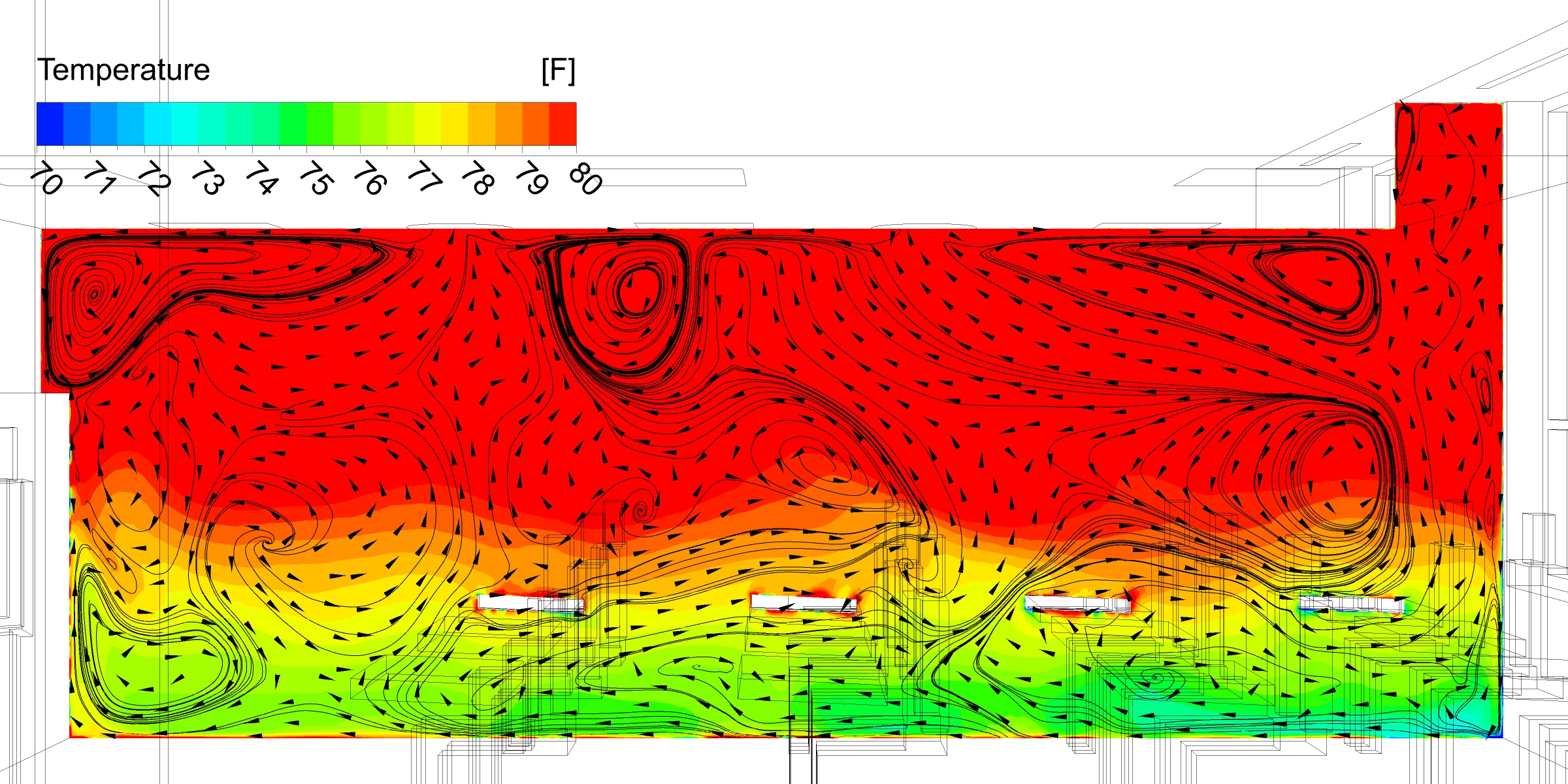 |
| Figure 2. The temperature profile of the initial design with overlaid velocity vectors |
Looking at the air patterns in figure 3, we can see that although the system generated air move¬ment down to the occupied zone, it was not enough to adequately mix the warm supply air into the occupied zone.
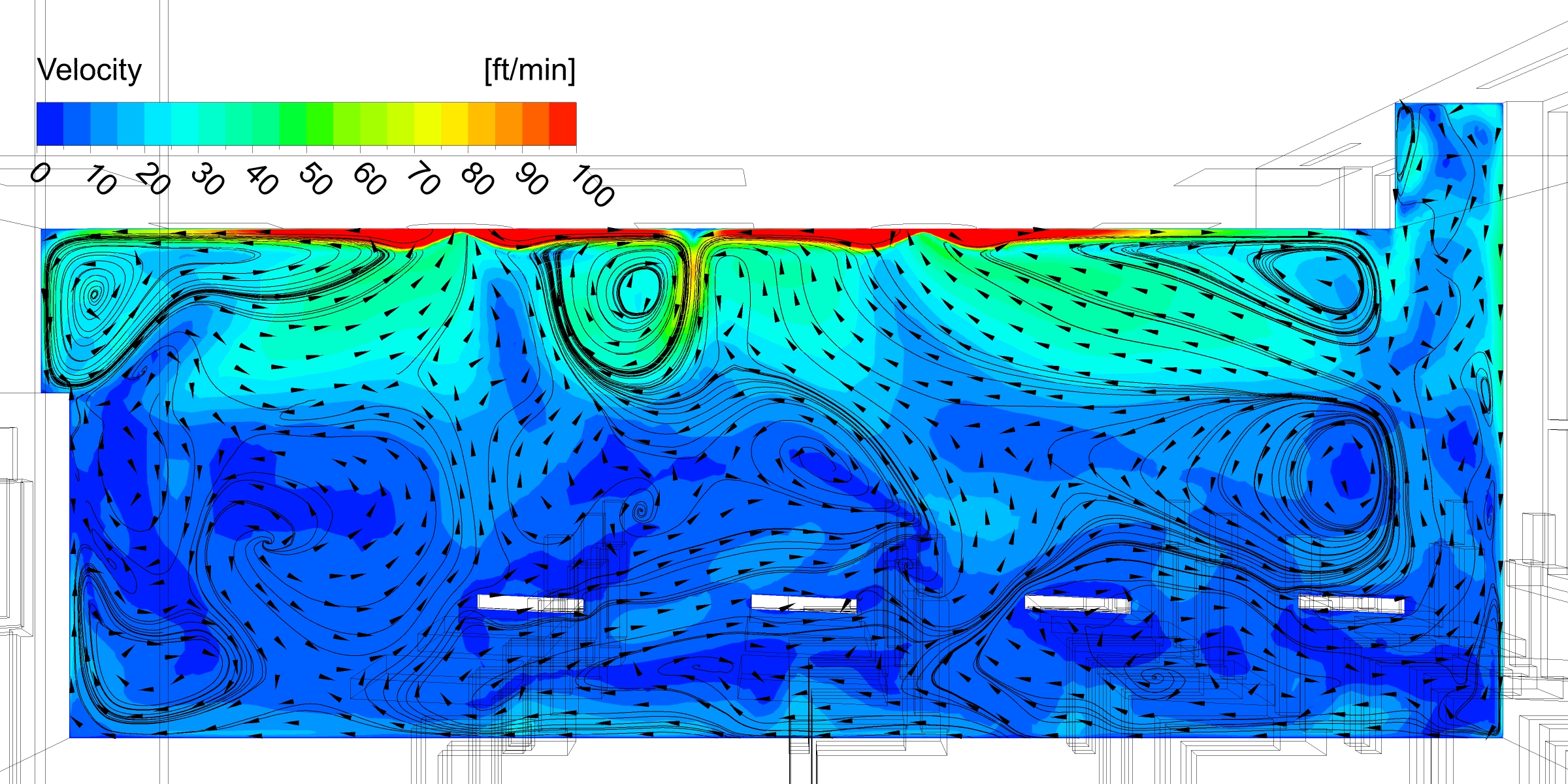 |
| Figure 3. The velocity profile of the initial design with overlaid velocity vectors |
The team’s final design omitted the slot diffusers, allowing the extra air volume to be shifted to the swirl diffusers, which were repositioned to further optimize mixing.
The results for this optimized design showed a much more uniform temperature distribution in the classroom (figure 4) with better comfort, lower thermal stratification and a significantly higher zone air distribution effectiveness.
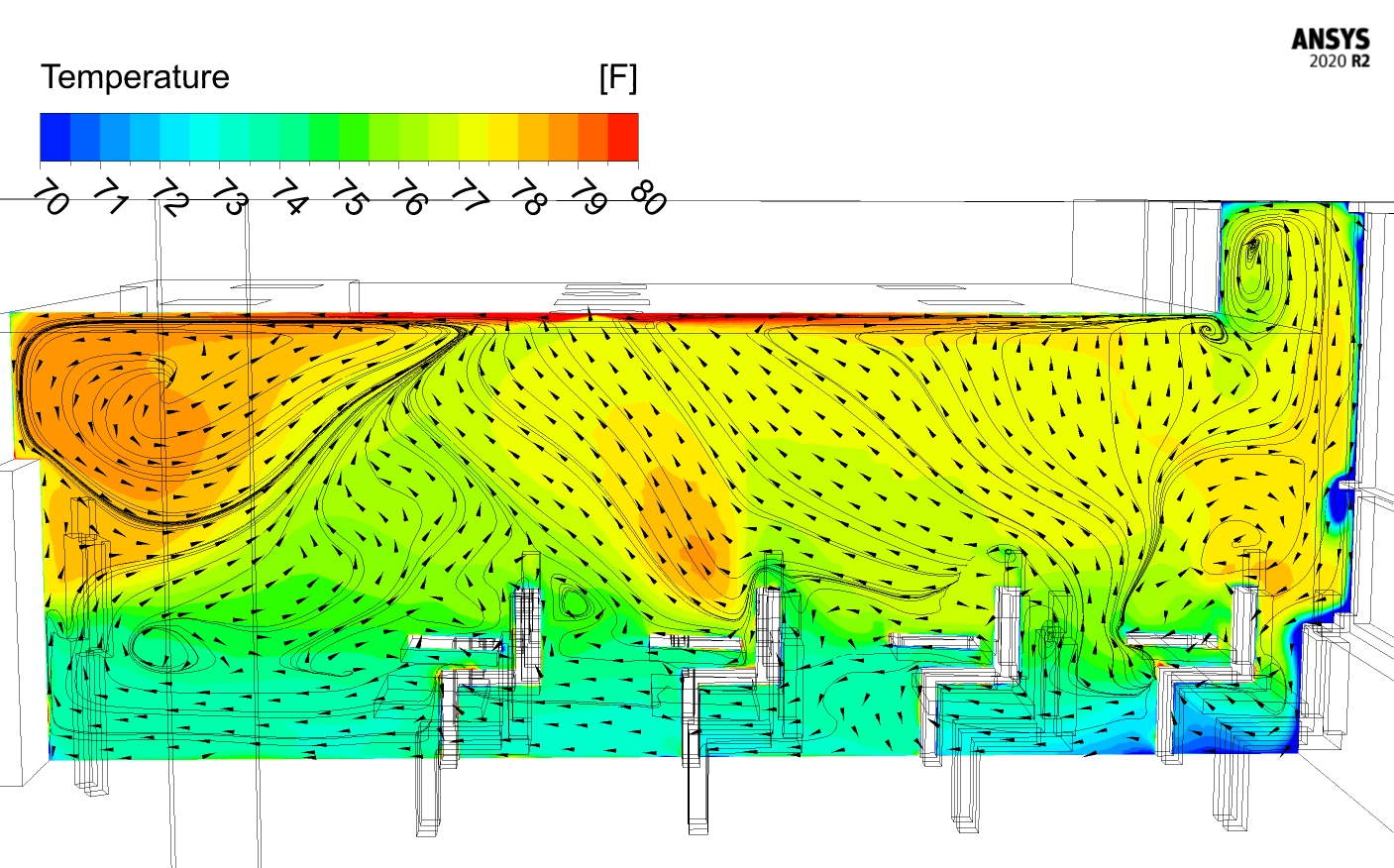 |
| Figure 4. The temperature profile of the optimized design with overlaid velocity vectors |
If we look at figure 5 and compare it to figure 3, we can see why this is the case. The placement of the diffusers combined with the extra airflow in the optimized design creates more air movement and allows the supply air to penetrate further down into the occupied zone.
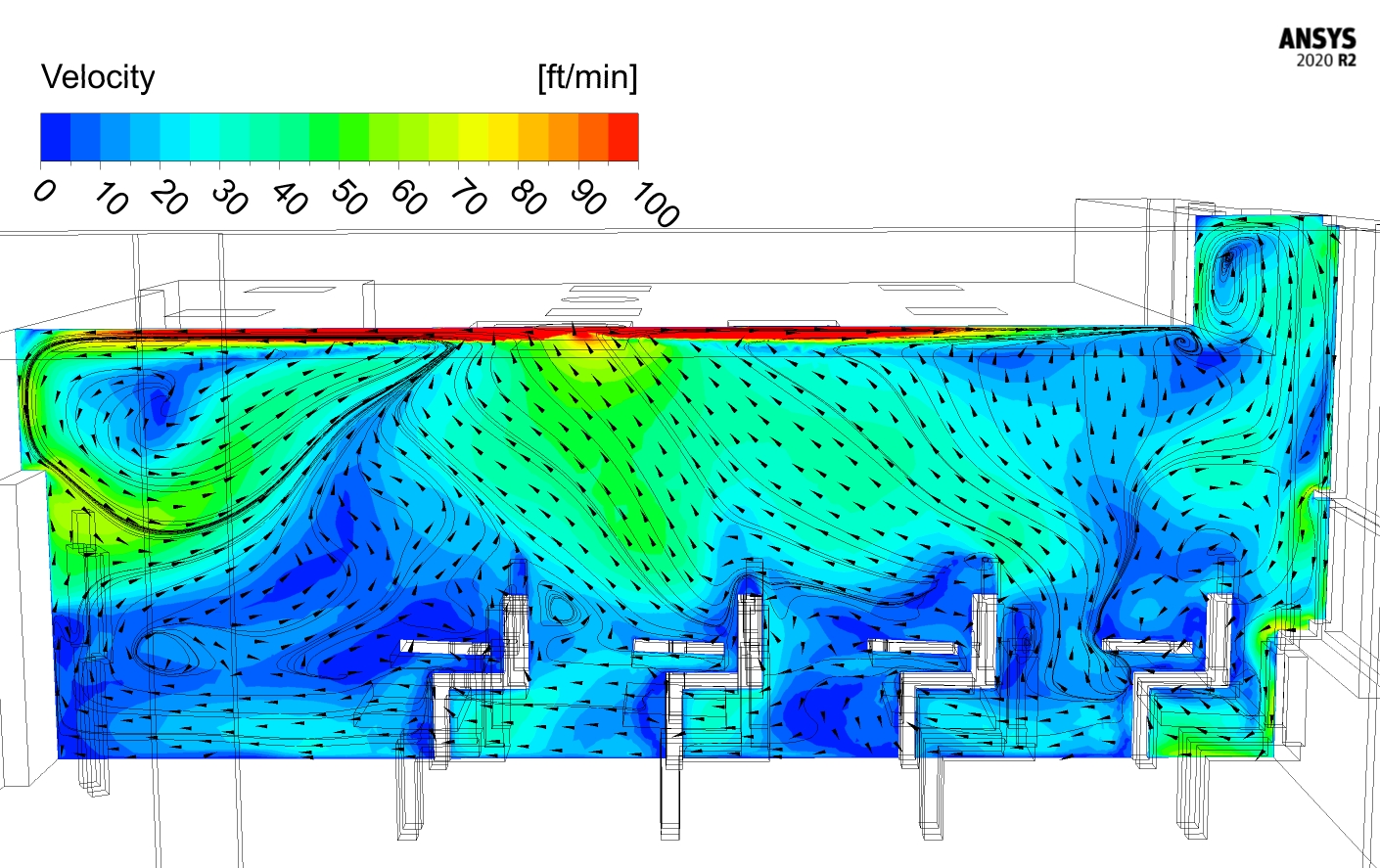 |
| Figure 5. The velocity profile of the optimized design with overlaid velocity vectors |
This study highlights not only the effectiveness of swirl diffusers for heating climates but also the importance of using a CFD analysis to achieve their intended performance in the real world. To learn more about CFD and how a CFD analysis can optimize your next project, email us at info@predictCFD.com.



